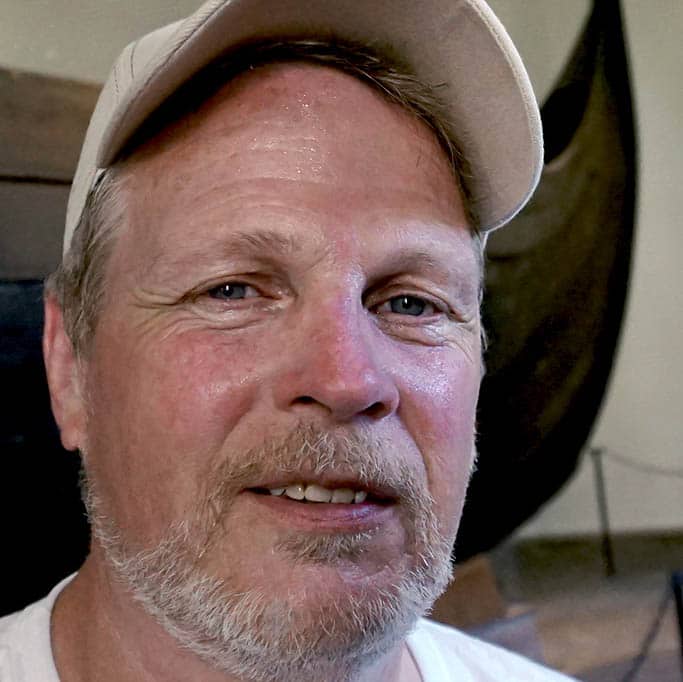Merv Rosenquist

Location
North Carolina
Availability
During the day, Monday – Friday until approximately 7:00pm
Type of Mentoring Provided
Camera fundamentals, including exposure levels.
Depth of field techniques for single-shot images.
Following “The Rule of Thirds” in compositions.
Breaking “The Rule of Thirds” in compositions.
Manual editing in Photoshop such as; cloning out distractions, masking using a brush, using brush masks for dodging and burning in a non-destructive and adjustable way, creating maximum definition in textured elements via manual brush masks, and creating or enhancing clouds and mist.
Longer shutter speeds with ND filters for smooth water scenes (how to determine shutter speed based on water flow intensity and desired effects).
The use of on-camera, off-camera and multiple off-camera flash setups for studio environments as well as outdoor environments.
How to use Hyperfocal Distance in landscape photography.
Creating overall depth through selective focus, color and light (usually requiring a combination and balance of all three).
Bio
I am 63 years old, retired and happily married to Julia, my life partner; I have two grown kids and several grandkids.
I began my photography journey in my early 20s with a manual film camera.
In my early 30s, I began using digital cameras. The switch to digital kicked off my journey into creating photographic “Photoshop Art Composites” that were not intended to be viewed as native photography but not necessarily art either, in my view.
Most of my composites were explicitly created for artists using real canvas and oil-based paints.
The artists enjoyed having a way to sort of “Preview” their ideas before spending weeks making their vision appear on the canvas; this approach proved very beneficial to the artists because they could have me add, remove or rearrange elements as desired. This service required me to learn how to be very aware of perspective and direction of light since all of the individual elements in my photographs had to “Fit” into the composite scene based on the artist’s visions.
This endeavor also required me to learn how to pay close attention to their descriptions so I could share their vision; fortunately, the artists I worked with always provided rough pencil sketches and highly detailed descriptions, which made my job much more manageable.
It was, and still is, understandable that all but one of the artists I worked with had me sign a non-disclosure agreement; they did not want their viewers to know they were using such a method to create their paintings. The only artist that didn’t use a non-disclosure agreement was proud of the method and was the only one I know of that specifically used my composites as a guide for re-creating the scene(s) with actual paint and natural canvas.
I often received very detailed critiques from the artists; some might seem extremely harsh to most, perhaps even offensive to many, but for me, that level of critique vastly improved the quality of my work and enhanced my embedded quest for minute details.
My time with those artists helped me understand how to create overall depth in an image, how to enhance definition in specific elements, how to use color to create more depth in an image, how to use DOF for more overall depth in an image, composition, perspective, how to have multiple elements while emphasizing the main element while not creating distractions with fill-in elements and much more.
I managed to create a few pieces of my own that local art shops carried for me; most were pretty simple and featured popular local churches and scenes from a working local historic community that dates back to 1763.
There was a period in the mix of things where I was asked to restore old, one-of-a-kind paintings and printed photographs digitally. While satisfying and successful, it was tedious and difficult since most of the “Missing” portions were filled in using old-fashioned guesswork.
And for a time, I created several digital graphics with some form of photographic elements for making industrial trade show banners and billboards.
I found myself having to make a hard choice in my early 40s, either continue to provide the service I was providing for artists, continue to grow my photography, or continue with the graphics, restorations and photoshop art composites commercially (all while running my construction business), or, go full steam ahead with my rapidly growing construction business.
I chose my construction business since it offered a more stable future for myself and my family.
Another deciding factor was not so obvious; creating work for money seemed to diminish the artistic side of photography for me, specifically concerning the philosophy of the “Art of Photography” this is entirely different and separate from the philosophy associated with “Photoshop Art Composites.” The artistic side was fading fast, and I wanted that back in my life.
I will never know if that was the right choice since it’s possible that my artistic side fading was just a phase I was going through, but I have no regrets.
At present, I am retired and now enjoy helping others when I feel I can.
I thoroughly enjoy watching people realize their own visions.
Specialties
See Bio.
Technical Expertise
–
Processing Software Used
Photoshop, Lightroom & Adobe Camera Raw
Camera System
–
